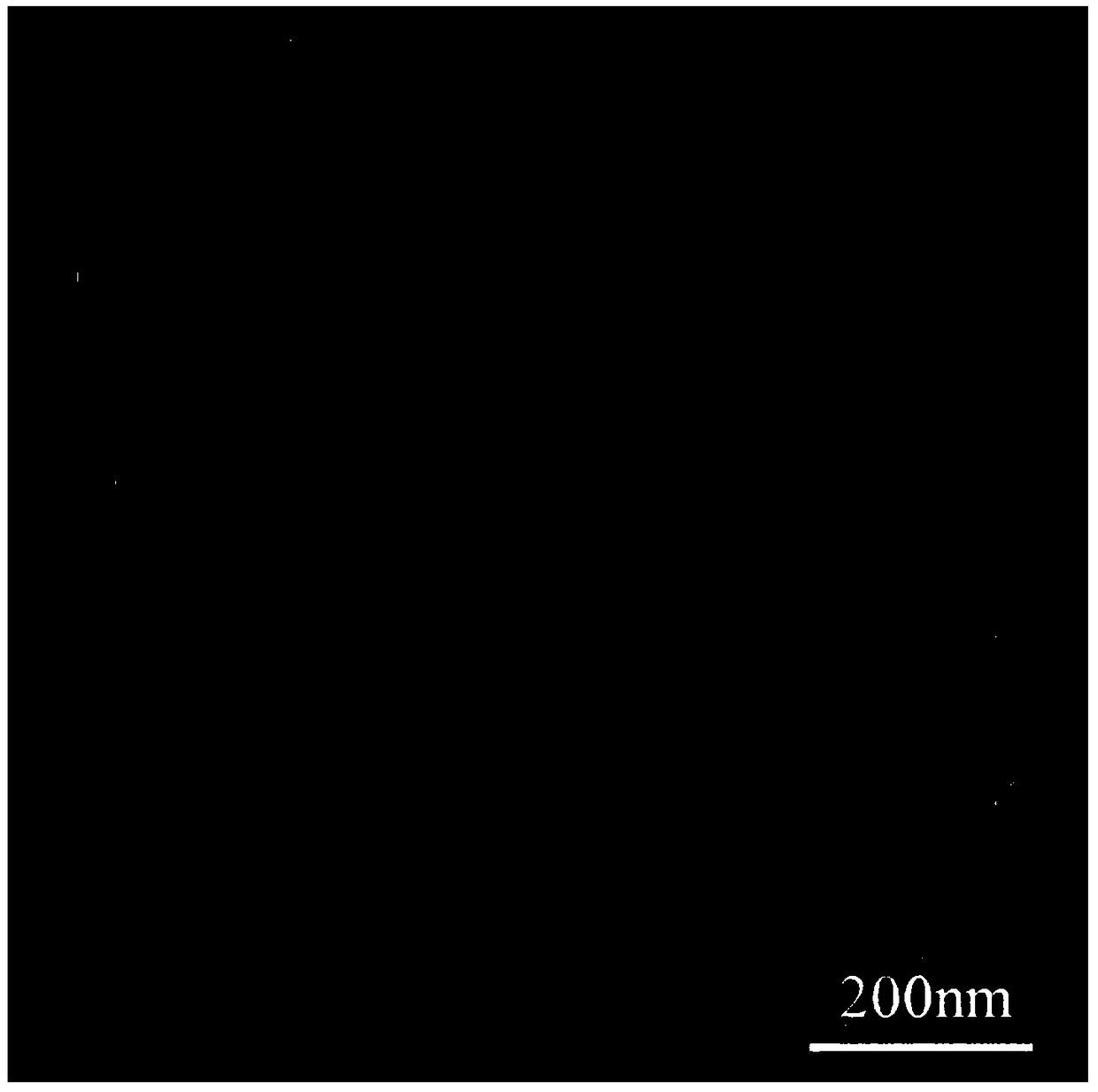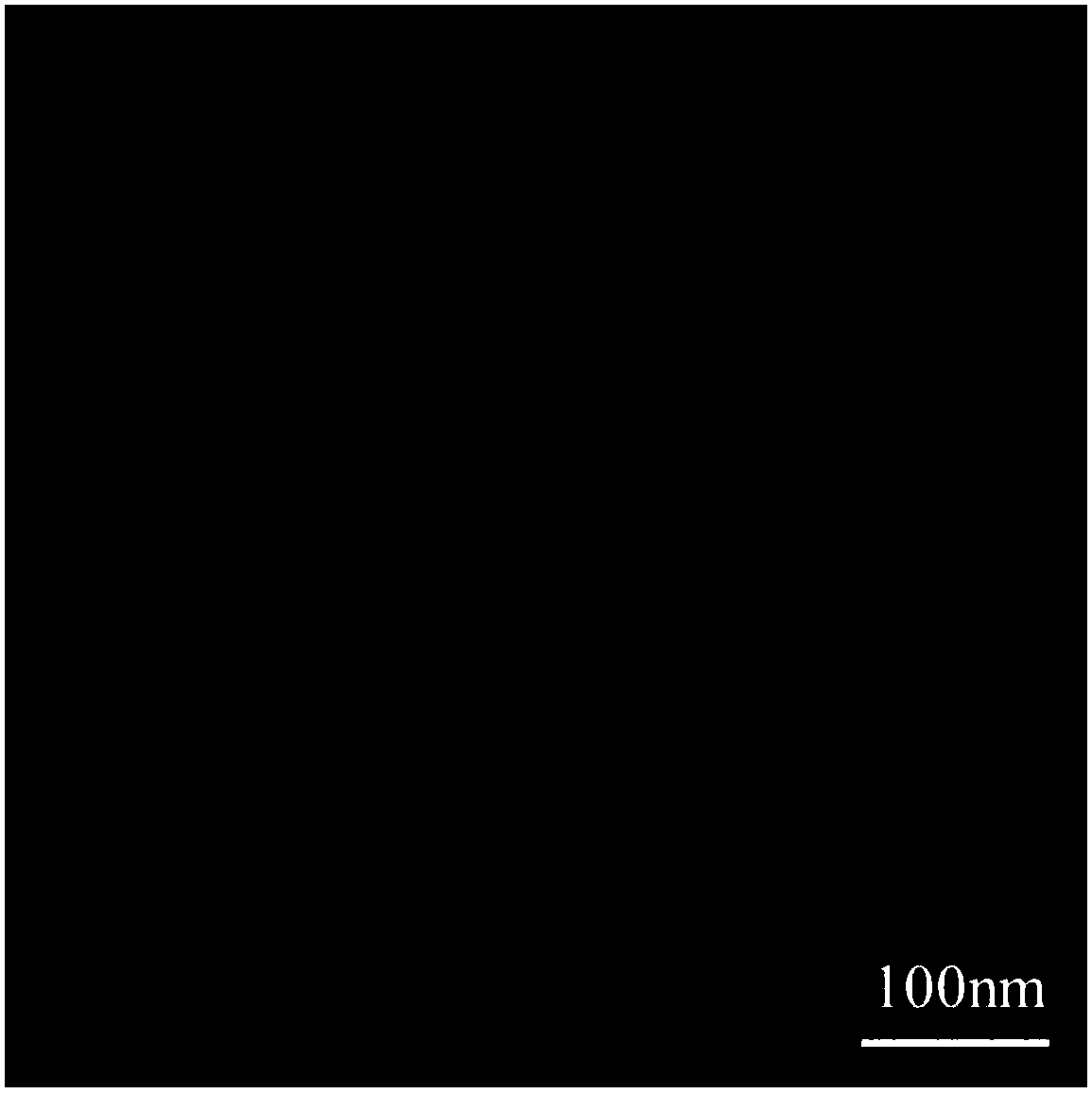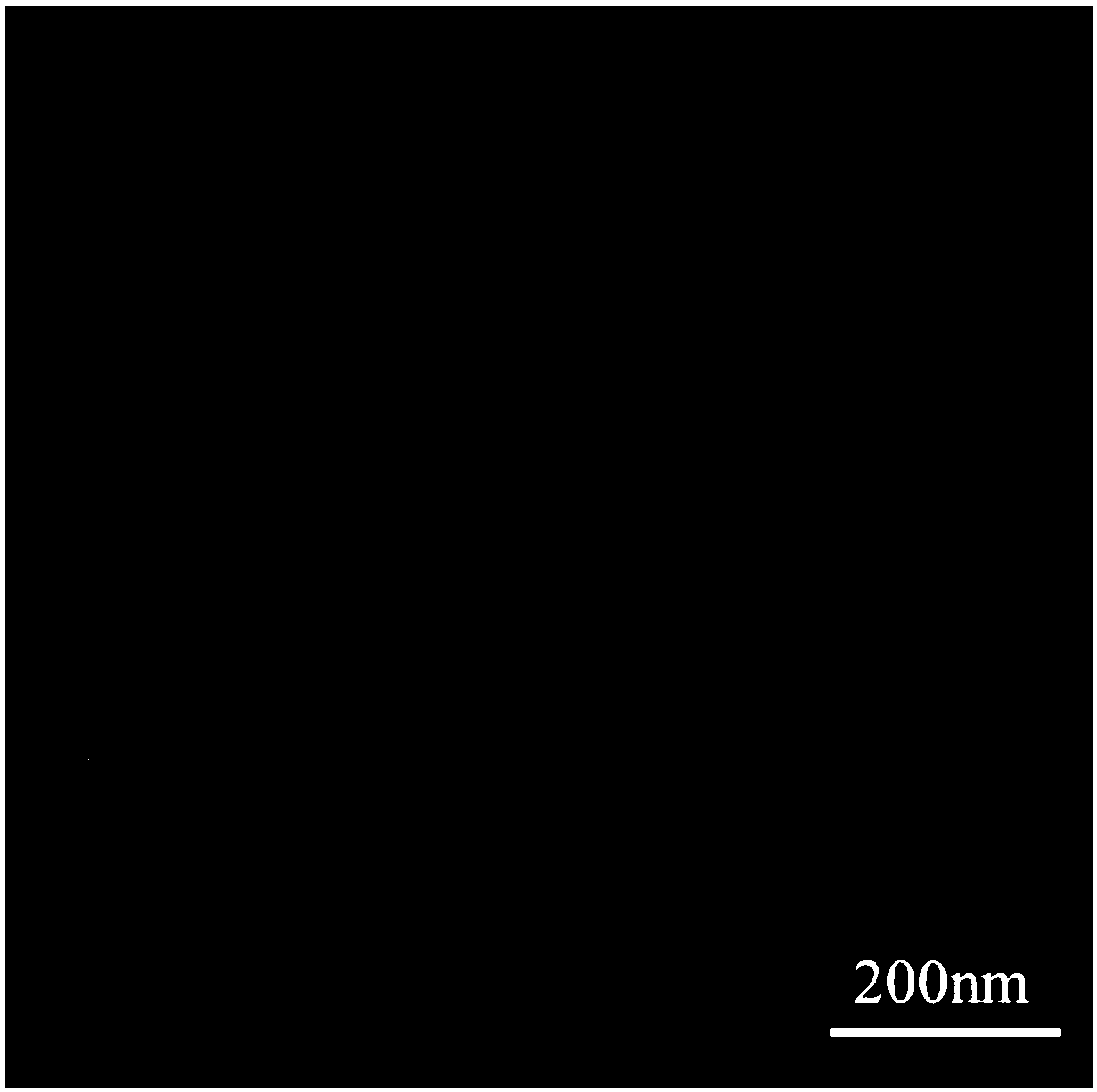A novel sulfonic acid polystyrene-silicon oxide hybrid solid acid catalyst and its preparation method
A solid acid catalyst, polystyrene technology, applied in organic compound/hydride/coordination complex catalysts, physical/chemical process catalysts, chemical instruments and methods, etc., can solve the complex process, time-consuming, composition and structure adjustment Difficulties and other problems, to achieve the effects of low reaction temperature, low energy consumption, and unique catalytic properties
- Summary
- Abstract
- Description
- Claims
- Application Information
AI Technical Summary
Problems solved by technology
Method used
Image
Examples
Embodiment 1
[0047] Disperse 0.20 g of CTAB and 0.10 g of PS in 60 mL of deionized water and ethanol solution under stirring at 50 °C, and then add NH 3 .H 2 O to adjust the pH value of the solution, add 3mmol TEOS after stirring, continue stirring for 3h, and crystallize at 100°C for 12h. After the product was filtered, washed with water and dried, it was extracted with absolute ethanol solution dissolved in concentrated hydrochloric acid at 70°C for 12 hours; after the product was filtered, washed with water and dried, a white light powder was obtained. The samples were confirmed to be hollow nanospheres by TEM characterization. Mix the above materials with chlorosulfonic acid at 0°C, stir for 12 hours, return to room temperature, wash with a large amount of water until the filtrate becomes neutral, then wash with ethanol, filter and dry to obtain light yellow powder . TEM results show that the obtained product is a nanomaterial with a hollow sphere structure, with uniform particle si...
Embodiment 2
[0049] The preparation process of Example 1 was adopted, except that the mass of PS added was 0.15 g. Finally, light yellow light powder was obtained. The representation method is the same as above. TEM results show that the obtained product is a hollow spherical nanomaterial with uniform particle size and good dispersion. The overall size of the obtained hollow spherical nanoparticle is 410nm, and the outer wall thickness is 80nm. The BET specific surface area after sulfonation is 338.6m 2 / g; the pore volume is 0.32cm 3 / g; the acid content is 1.65mmol H + / g. ( figure 2 )
Embodiment 3
[0051] The preparation process of Example 1 was adopted, except that the mass of PS added was 0.20 g. Finally, light yellow light powder was obtained. The representation method is the same as above. TEM results show that the obtained product is a nano material with a hollow sphere structure, with uniform particle size and good dispersion. The overall size of the obtained hollow sphere nanoparticles is 500nm, and the outer wall thickness is 110nm. The BET specific surface area after sulfonation is 270.2m 2 / g; the pore volume is 0.28cm 3 / g; the acid content is 1.8mmol H + / g. ( image 3 )
PUM
| Property | Measurement | Unit |
|---|---|---|
| specific surface area | aaaaa | aaaaa |
| specific surface area | aaaaa | aaaaa |
| specific surface area | aaaaa | aaaaa |
Abstract
Description
Claims
Application Information
 Login to View More
Login to View More - R&D
- Intellectual Property
- Life Sciences
- Materials
- Tech Scout
- Unparalleled Data Quality
- Higher Quality Content
- 60% Fewer Hallucinations
Browse by: Latest US Patents, China's latest patents, Technical Efficacy Thesaurus, Application Domain, Technology Topic, Popular Technical Reports.
© 2025 PatSnap. All rights reserved.Legal|Privacy policy|Modern Slavery Act Transparency Statement|Sitemap|About US| Contact US: help@patsnap.com



